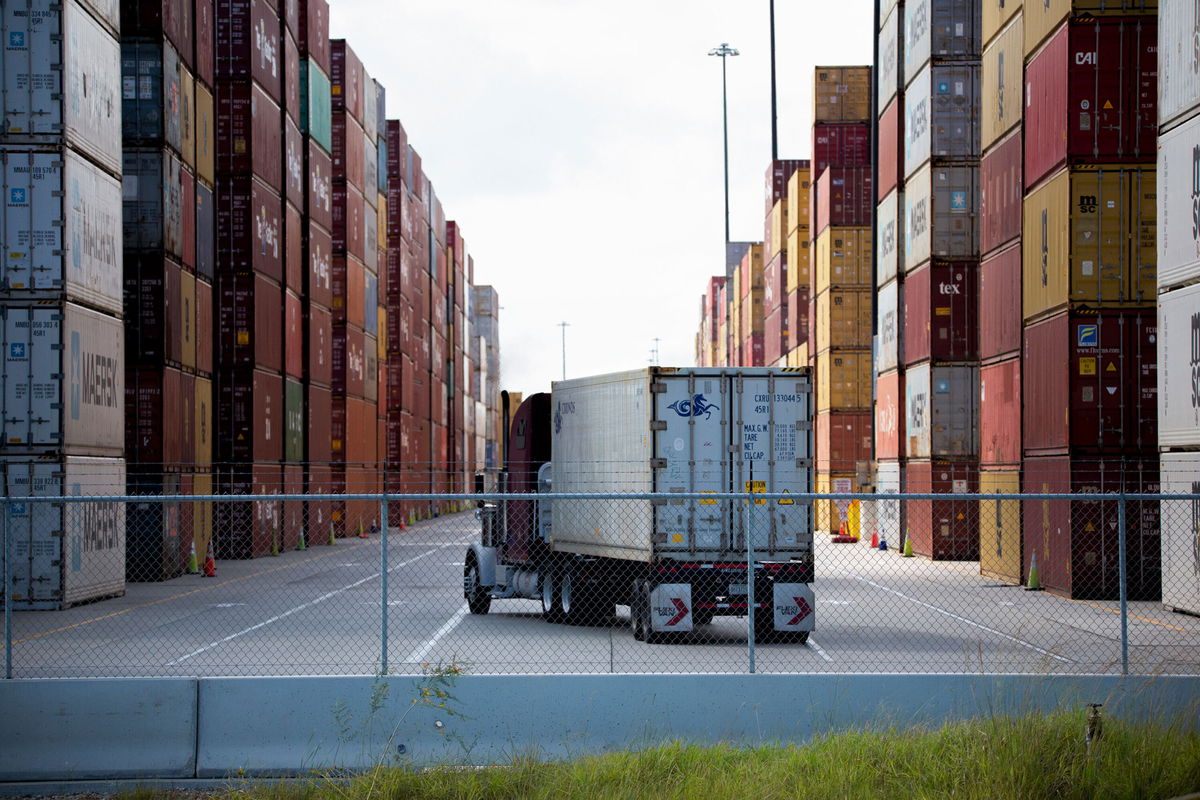Vaccines are helping the economy return to normal. Supply chain problems are holding it back

An eighteen-wheeler is seen entering one of the main shipping container corridors at The Port of Houston on October 12th
By Anneken Tappe, CNN Business
Covid continues to loom over the US economy, but economic activity is nonetheless inching closer to its pre-pandemic strength, helped in large part by people returning to their offices.
The biggest problem putting a damper on early celebrations: the ongoing supply chain crisis.
The Back-to-Normal Index created by CNN Business and Moody’s Analytics, stood at 94% on Friday, down one percentage point from the week before.
“Business sentiment was the biggest negative weight on the index this week, likely the result of ongoing supply chain issues as well as continued hiring struggles,” said Dante DeAntonio, senior economist at Moody’s Analytics.
Even so, some states, such as Idaho, Rhode Island and South Dakota, have already exceeded their pre-pandemic levels, surpassing the 100% mark,
New York and Illinois trail the rest of the nation, at only 86% and 88% back to normal, respectively. New York was particularly hard hit during the height of the pandemic and its economy is still reeling. Louisiana, still recovering from the impact of Hurricane Ida, is 89% back to normal, the index shows.
Yet there’s reason for cautious optimism about the those states and the broader US economy: “We’ve seen things rise quite steadily since mid-September, coinciding with the winding down of [Covid] cases,” said Moody’s Analytics Associate Economist Matt Colyar.
The improvements have been broad-based — the index tracks a number of variables, which show state unemployment rates have fallen, box office sales are back up, and the number of people traveling through TSA checkpoints has more than doubled versus last year.
This looked very different last month, when the Delta variant drove cases higher, people got worried about traveling and dining out again and the Back-to-Normal Index fell to its lowest level since June.
But America seems to have turned a corner — again.
For one, mobility data suggests that people are returning to the office, said Colyar. Companies made a push over the summer to get employees back to their desks. Rising vaccination rates helped with that effort.
“A behavioral shift has occurred, driven by some combination of the school year starting and parents going back at least a few days a week and vaccine mandates allowing employers to put more firm plans out there,” he added.
Last month’s rolloff of pandemic jobless benefits also helped the Back-to-Normal Index take a big step in the right direction. Claims for jobless benefits fell to a new pandemic-era low of 290,000 last week, adjusted for seasonal swings. As of October 2, some 3.3 million Americans had received benefits under various government programs.
And after another disappointing jobs report in September, Colyar is among the economists confident that October will be better, not least because the survey week for the September report coincided with a lot of Covid cases.
The Back-to-Normal Index measures data frequently and is upated once per week, which means it’s way ahead of some of the official government data that could show the improvements to the economy this fall.
The-CNN-Wire
™ & © 2021 Cable News Network, Inc., a WarnerMedia Company. All rights reserved.